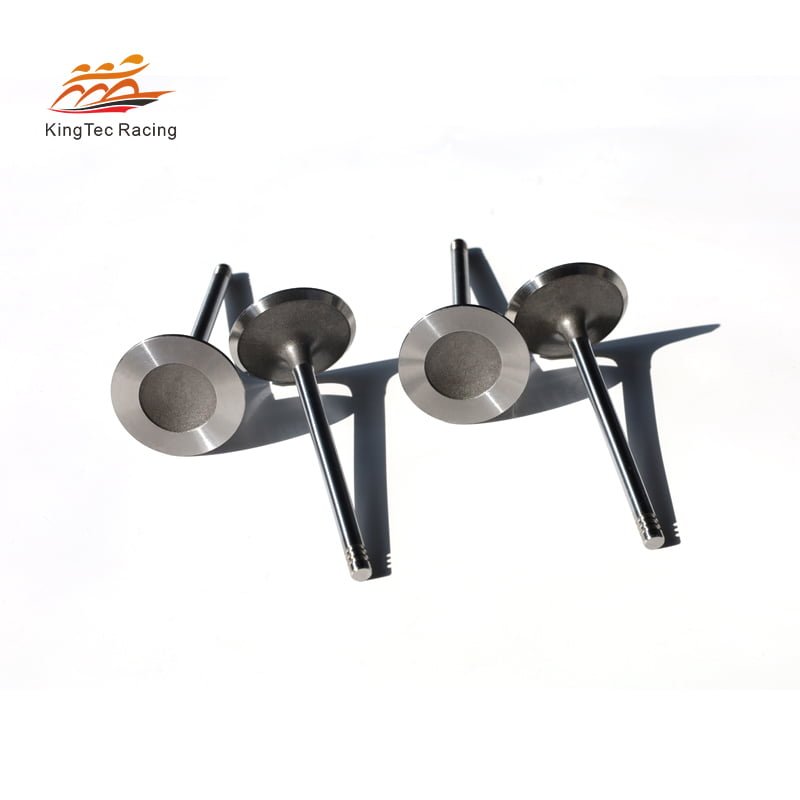For the jet ski Yamaha 1.8L engine, changing the piston in those places can increase acceleration for racing.
Increasing the piston bore usually increases engine displacement, which may increase engine power and torque. However, this change requires careful engineering involving many other aspects such as adjustments to the intake system, fuel supply, ignition system and exhaust system.
For a jet ski Yamaha 1.8 litre engine, if you want to improve acceleration for racing, there are other factors to consider in addition to the piston bore change:
1. Cylinder head and valve design: Optimising cylinder head design and valve configuration can improve combustion efficiency and performance.
Ignition system and fuel supply: Upgrading the ignition system and fuel injection system to ensure better combustion and fuel supply.
2. Exhaust System: Improvements to the exhaust system can reduce exhaust drag and increase power output.
3. Supercharging or Oxygen Enhancement Systems: Use turbocharging or other supercharging systems, or consider oxygen enhancement technologies to increase oxygen supply and improve combustion efficiency.
Of course, there are a number of other factors that can affect engine performance, especially if you’re looking for race performance:
1. Weight reduction:
Reducing the overall weight of a jet ski can improve acceleration. The use of lightweight materials, streamlining of components and construction, and reduction of unnecessary accessories are all common practices.
2. Drivetrain optimisation
Improvements to the driveline, such as optimising ratios, improving the gearbox or using a more efficient driveline, can increase the efficiency of power transmission.
3. Power control and tuning:
Advanced tuning and optimisation for more precise power delivery through improvements to the electronic control unit (ECU) and power control system.
4. Aerodynamic optimisation:
Improvements to the body and exterior design to reduce aerodynamic drag and increase speed and acceleration.
5. Tyres and Suspension:
The use of higher performance tyres and tuning and optimisation of the suspension can improve traction and handling.
6. Cooling System Improvements:
Improving the efficiency of the cooling system ensures that the engine stays at a good temperature during high-performance operation.
7. Testing and tuning:
Whatever modifications are made, they need to be adequately tested and tuned. Performance improvements are validated through experimentation and simulation, and adjustments are made to optimise the results.


The standard bore of the piston is 86mm, what will happen if it is increased to 86.5mm or 87mm?
Increasing the piston cylinder diameter from the standard 86mm to 86.5mm or 87mm might lead to several effects:
1. Increase in Displacement:
Enlarging the piston cylinder diameter will augment the engine’s displacement. This means each piston can accommodate a larger volume of the air-fuel mixture within its stroke, resulting in the generation of more energy during the combustion process. Typically, this enhances the engine’s power and torque.
2. Expansion of Combustion Chamber Volume:
An increase in piston cylinder diameter might enlarge the combustion chamber’s volume, potentially affecting the combustion process. This needs to be balanced through cylinder head and piston design to ensure efficient combustion.
3. Reduction in Cylinder Wall Thickness:
Enlarging the piston cylinder diameter might decrease the distance between the piston and cylinder wall, leading to thinner cylinder walls. This could impact the structural strength and durability of the engine, as reduced wall thickness might increase vibration and heat stress.
4. Changes in Piston Material and Design:
Larger piston sizes may necessitate the use of more wear-resistant materials or adjustments in piston design to withstand higher temperatures and pressures.
5. Adjustments in Engine Internal Structure:
Enlarging the piston cylinder diameter often requires adjustments or replacement of key components such as pistons, piston rings, crankshafts, connecting rods, etc., to accommodate the larger size.
When making such modifications, it’s crucial to consider all potential impacts and conduct thorough engineering design and testing. Such alterations might demand recalibration and optimization of the engine to ensure the expected levels of safety, performance, and reliability.




